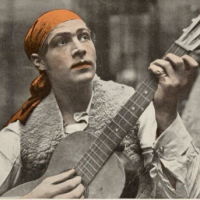DjangoBooks.com
Welcome to our Community!
Categories
- 20K All Categories
- 1.1K General
- 476 Welcome
- 59 Archtop Eddy's Corner
- 146 CD, DVD, and Concert Reviews
- 384 FAQ
- 26 Gypsy Jazz Italia
- 26 Photos
- 202 Gypsy Picking
- 21 Unaccompanied Django
- 15 Pearl Django Play-Along Vol.1
- 17 Gypsy Fire
- 45 Gypsy Rhythm
- 1.4K Gypsy Jazz University - Get Educated
- 130 Gypsy Jazz 101
- 224 Repertoire
- 218 History
- 707 Technique
- 51 Licks and Patterns
- 6 Daniel Givone Manouche Guitare Method Users Group
- 20 Eddie Lang Club
- 1.3K Gypsy Jazz Gear
- 801 Guitars, Strings, Picks, Amps, Pickups and Other Accessories
- 457 Classifieds
- 49 Recording
- 62 Other Instruments
- 18 Violin
- 5 Mandolin
- 22 Accordion
- 7 Bass
- 10 Woodwinds
- 346 Gypsy Jazz Events
- 142 North America
- 109 Europe
- 95 International
In this Discussion
Who's Online (0)
Down-Down-Up
Hey all.. do most folks do the down-down-up universally for odd numbers of notes on strings recommended in Micheal's Gypsy Picking example #6? Or do many just do it on the high E? It seems challenging to work out on the fly for less lick-based, more improvisation kinds of playing.
I have been incorporating it mostly on the high E on licks and arps I'm working out. But, for playing without thinking, it seems super-challenging to etch into my unconscious in the way that I have with the "all downstrokes all the time when switching strings" approach.
Any comments, discussion, or suggestions relating to incorporating and practicing this technique would be appreciated.
Lastly, is this what Stochelo does or does he just use downstrokes for switching strings at all times?
Thanks.
Jonathan
I have been incorporating it mostly on the high E on licks and arps I'm working out. But, for playing without thinking, it seems super-challenging to etch into my unconscious in the way that I have with the "all downstrokes all the time when switching strings" approach.
Any comments, discussion, or suggestions relating to incorporating and practicing this technique would be appreciated.
Lastly, is this what Stochelo does or does he just use downstrokes for switching strings at all times?
Thanks.
Jonathan
Tagged:










Comments
Not sure if you will find an answer to your question, but lots of good insights.
I did quite a few searches and didn't find a discussion topic in that thread or others relating to my question, which is why I started a new discussion thread. I'm very curious to see what people's thoughts are.
I think you pretty much nailed it right there.
You could look at DC Music School YouTube channel, Denis has a lot of videos there which could give you what you're looking for.
This is one of the first that came up after I did a search on YouTube. I think his lessons are by far the best value on the Internet when you look at the quality of production vs price know knowing his vast knowledge on the subject.
http://www.dc-musicschool.com/catalogue/video-lessons/gypsy-jazz-guitar-technique/
From Micheal's sixth exercise intro, "When an odd number of notes must be played on a single string and then followed by a downward string change, it is more efficient to play two downstrokes in a row so that the last pick stroke before the string change is an upstroke."
If you play down up down then you set a down stroke up for your string change, from my studies that is more used universally
Yes but if the next string change is to a lower [pitched] string, sometimes down-down-up is better. For example in the whole-tone part of rhythm futur, I've heard stochelo plays down-down-up on the E string.